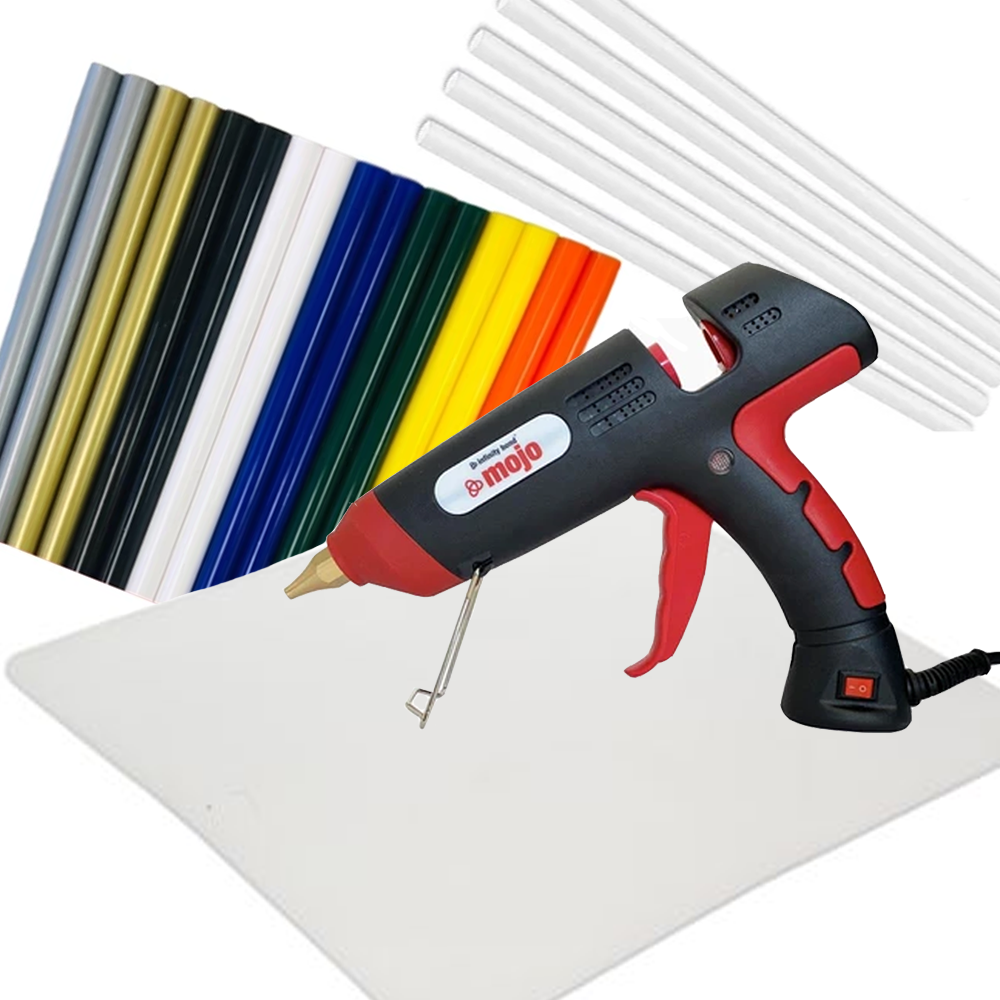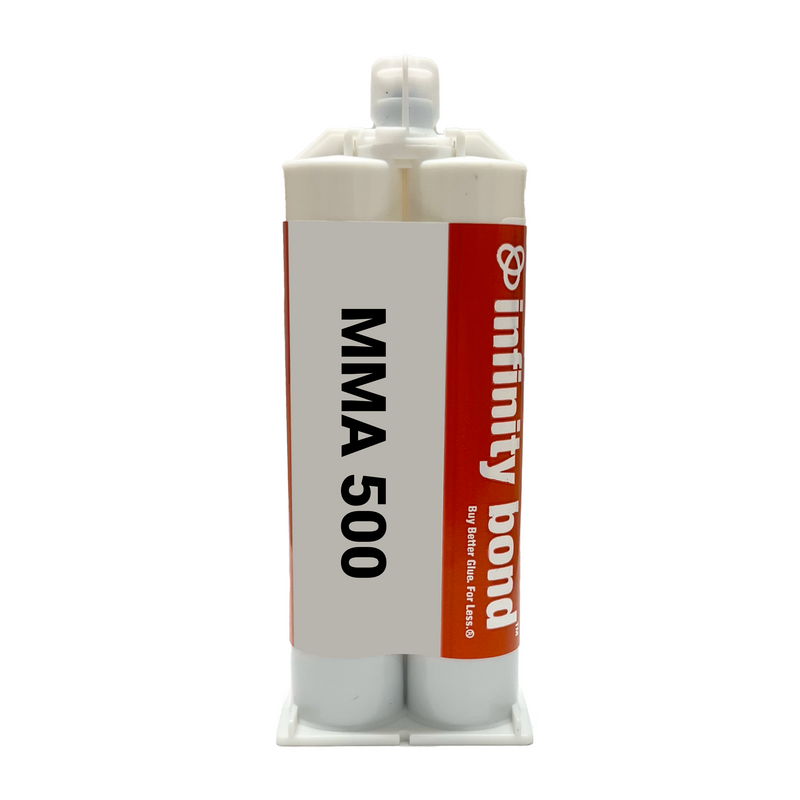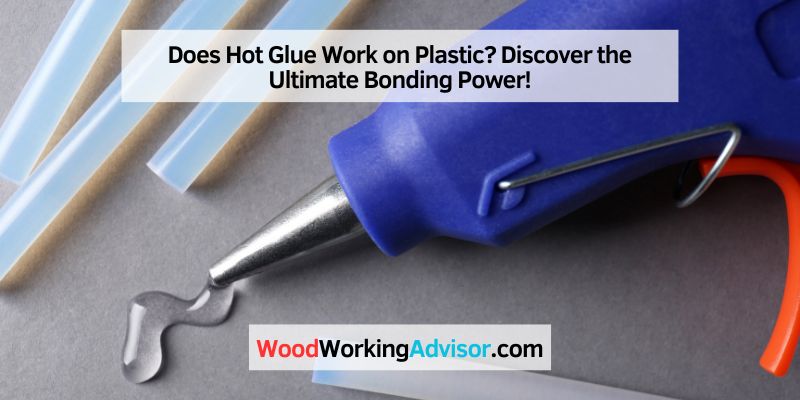Hot glue is effective for bonding plastic materials together. It forms a strong and durable bond.
The Science Behind Hot Glue On Plastic
If you’ve ever wondered whether hot glue actually works on plastic, you’re not alone. Understanding the science behind this adhesive mechanism can help you make an informed decision about whether hot glue is the right solution for your plastic projects. In this article, we’ll explore the adhesion mechanism of hot glue on plastic and the crucial step of plastic surface preparation.
Adhesion Mechanism
Hot glue is a versatile adhesive that is commonly used in various crafting and DIY projects. When it comes to adhering plastic, hot glue utilizes a unique mechanism to bond the two materials together.
Hot glue, also known as thermoplastic adhesive, is composed of polymer-based thermoplastic components. These components melt when exposed to heat and solidify upon cooling, creating a strong bond. The adhesion occurs due to the intermolecular forces, specifically Vander Waals forces, between the solidified hot glue and the plastic surface.
This adhesive mechanism allows hot glue to effectively stick to a wide range of plastics, such as polyethylene, polypropylene, PVC, and ABS. However, it may not be suitable for all types of plastic, particularly those with low melting points or that are highly flexible.
Plastic Surface Preparation
To maximize the adhesion of hot glue on plastic, proper surface preparation is essential. Before applying hot glue, it’s crucial to clean the plastic surface thoroughly to remove any dust, oils, or contaminants that may interfere with adhesion.
Here are some steps you can follow for effective plastic surface preparation:
- Begin by wiping the plastic surface with a clean cloth or paper towel to remove any loose debris.
- If the plastic surface is particularly dirty or greasy, consider using a mild detergent or plastic-friendly cleaning solution to clean it.
- After cleaning, rinse the plastic surface with water and allow it to dry completely.
- If necessary, you can use sandpaper or a soft abrasive pad to lightly roughen the surface. This can enhance the bonding ability of hot glue by providing a rougher surface for the adhesive to grip onto.
Remember to always wear safety goggles and gloves when working with hot glue and follow the manufacturer’s instructions for proper usage and handling.
By understanding the adhesion mechanism of hot glue on plastic and following the necessary steps for plastic surface preparation, you can ensure a strong and durable bond for your projects. So, next time you’re wondering if hot glue works on plastic, you can confidently grab that glue gun and get crafting!

Credit: www.gluegun.com
Types Of Hot Glue For Plastic
If you’re wondering whether hot glue works on plastic, the answer is a resounding yes! Hot glue is a versatile adhesive that bonds well with a wide range of materials, including plastic. However, it’s important to choose the right type of hot glue for your plastic project to ensure a strong and durable hold. In this article, we’ll explore two main types of hot glue for plastic: low-temperature hot glue and high-temperature hot glue.
Low-temperature Hot Glue
Low-temperature hot glue, also known as cool melt glue, is a popular choice for bonding plastic materials. As the name suggests, this type of hot glue operates at a lower temperature than its high-temperature counterpart. The lower temperature reduces the risk of damaging heat-sensitive plastics during the bonding process.
One of the key advantages of low-temperature hot glue is its quick-drying nature. It sets rapidly, allowing you to work efficiently on your projects without the need for extended waiting times. This is especially useful when working with delicate or intricate plastic components that require precise placement and alignment.
While low-temperature hot glue offers a strong bond, it may not be suitable for heavy-duty applications. Its lower temperature can result in a less robust hold compared to high-temperature hot glue. Therefore, it’s important to consider the specific requirements of your plastic project before opting for this type of hot glue.
High-temperature Hot Glue
High-temperature hot glue, on the other hand, is ideal for projects that demand a stronger and more durable bond. This type of hot glue operates at a higher temperature, allowing it to provide a secure hold on various types of plastics. Whether you’re working with polypropylene, PVC, ABS, or other common plastic materials, high-temperature hot glue can deliver reliable results.
With its high melting point, this hot glue type boasts better resistance to heat and humidity. It can withstand challenging environmental conditions, making it suitable for both indoor and outdoor applications. Whether you’re designing crafts, repairing household items, or creating prototypes, high-temperature hot glue is a reliable choice for plastic bonding.
It’s worth noting that high-temperature hot glue requires a glue gun with a higher wattage and temperature control settings. This ensures that the adhesive reaches the optimal temperature for proper bonding. Always refer to the manufacturer’s instructions and recommended temperatures to ensure the best results with this type of hot glue.
In Conclusion
When it comes to bonding plastic materials, selecting the right type of hot glue is crucial. Both low-temperature and high-temperature hot glues have their unique advantages and considerations. Assess the specific needs of your plastic project, such as the material type, required bond strength, and environmental conditions, to determine the most suitable hot glue option. With the right choice, you can achieve a strong, lasting bond that withstands the test of time.
Tips For Using Hot Glue On Plastic
When using hot glue on plastic, it’s important to understand the proper application techniques and considerations for different types of plastic. By following these tips, you can ensure a successful and long-lasting bond between the hot glue and the plastic material.
Proper Application Techniques
When applying hot glue to plastic, it’s essential to ensure that the surface is clean and free of any dust or debris. This can be achieved by wiping the plastic with a cloth and some rubbing alcohol. Additionally, preheating the plastic surface with a hairdryer can help the hot glue adhere more effectively. When applying the hot glue, it’s important to work quickly and efficiently to prevent it from hardening before the plastic pieces are properly aligned.
Consideration Of Plastic Type
It’s important to consider the type of plastic you are working with when using hot glue. Some plastics, such as polypropylene and polyethylene, may require specialized adhesives rather than hot glue due to their low surface energy. However, hot glue can be effective on plastics such as PVC, ABS, and styrene. Before applying hot glue, it’s crucial to identify the type of plastic and ensure that it is compatible with hot glue adhesion.

Credit: www.gluegun.com
Benefits And Limitations
Hot glue can work effectively on certain types of plastics, providing a fast and strong bond. However, it may not be suitable for all plastic materials, particularly those with low surface energy or flexibility. It’s essential to consider the specific type of plastic and its characteristics before using hot glue as an adhesive.
Benefits Of Hot Glue On Plastic
When it comes to crafting and DIY projects, hot glue is a versatile and popular adhesive choice. It is known for its quick-drying time and strong bond, making it suitable for various materials, including plastic. Using hot glue on plastic offers several advantages that make it a go-to option for many crafters and DIY enthusiasts.
1. Quick and Easy Application: Hot glue guns are user-friendly, allowing for precise application on plastic surfaces. The glue melts quickly and adheres to the plastic almost instantly, saving you valuable time and effort.
2. Strong Bond: Hot glue forms a sturdy bond, creating a lasting connection between plastic pieces. This is particularly useful when you want to secure different parts or create 3D structures that require extra support.
3. Versatility: Whether you are working with hard plastic, flexible plastic, or even smooth surfaces like acrylic or PVC, hot glue can effectively stick to a wide range of plastic materials. It is a versatile option that can be used for various projects, such as repairing broken plastic items, assembling plastic pieces, or decorating plastic surfaces.
4. No Specialized Equipment Required: Hot glue guns are inexpensive and readily available, making them accessible to DIYers of all levels. Unlike other adhesives that require mixing or specific tools, hot glue can be applied using a standard glue gun, often found in craft stores or online.
5. Temporary Bonding: Hot glue allows for temporary bonding on plastic surfaces as it can be easily removed or repositioned. If you make a mistake or need to make adjustments, the glue can be softened with heat (e.g., a hairdryer) and peeled off without damaging the plastic surface.
Challenges And Solutions
While hot glue is a convenient adhesive for plastic, it does have its limitations. Understanding these challenges and their solutions can help you achieve the desired results in your projects.
1. Heat Sensitivity: Some plastic materials are sensitive to high temperatures, which can cause them to warp or become damaged when exposed to hot glue. To mitigate this issue, use a low-temperature hot glue gun or test a small, inconspicuous area of the plastic before applying the glue to ensure compatibility.
2. Limited Strength on Certain Plastics: While hot glue provides a strong bond on most plastics, certain types, such as polyethylene or polypropylene, pose challenges due to their low surface energy. In such cases, consider roughening the plastic surface or using specialized adhesives designed for bonding these specific plastics.
3. Longevity: Hot glue may not provide a permanent bond on plastic and can sometimes lose its grip over time, especially when exposed to extreme temperatures, moisture, or frequent stress. If you need a more durable and long-lasting bond, exploring other adhesive options specific to your project can be beneficial.
4. Visible Glue Lines: Hot glue can create visible glue lines on plastic surfaces, which may not be desirable depending on the project. To minimize this effect, apply the glue sparingly and evenly distribute it to ensure a seamless appearance.
By understanding the benefits hot glue offers when working with plastic, along with the challenges it may present, you can make informed decisions and achieve successful results in your crafting and DIY endeavors.
Comparing Hot Glue With Other Plastic Bonding Methods
When it comes to bonding plastic, there are several methods to choose from. Two commonly used options are hot glue and epoxy, as well as hot glue and super glue. In this section, we will compare these plastic bonding methods to help you determine which one is right for your project.
Hot Glue Vs. Epoxy
Hot glue and epoxy are both effective options for bonding plastic. However, they have some significant differences that you should consider before making a choice.
| Hot Glue | Epoxy |
|---|---|
| Quick and easy to use | Requires mixing of resin and hardener |
| Provides a strong bond | Offers an exceptionally strong bond |
| May not be suitable for high-temperature applications | Can withstand high temperatures |
| Can be easily removed and repositioned | Difficult to remove once fully cured |
Hot glue is an excellent choice for quick and easy plastic bonding. It provides a strong bond and can be used for a wide range of applications. However, it may not be the best option for projects that require exposure to high temperatures, as hot glue can melt.
Epoxy, on the other hand, offers an exceptionally strong bond that can withstand high temperatures. It requires a bit more effort to use, as you need to mix the resin and hardener before applying it. Once fully cured, epoxy becomes difficult to remove or reposition.
Hot Glue Vs. Super Glue
Another popular plastic bonding method to consider is super glue. Let’s take a look at how hot glue and super glue compare:
| Hot Glue | Super Glue |
|---|---|
| Quick and easy to use | Quick and easy to use |
| Provides a strong bond | Provides an incredibly strong bond |
| May not be suitable for high-temperature applications | Not suitable for high-temperature applications |
| Can be easily removed and repositioned | Difficult to remove once fully cured |
Hot glue and super glue share many similarities when it comes to plastic bonding. Both are quick and easy to use, providing strong bonds. However, they both have limitations when it comes to high-temperature applications. Additionally, like epoxy, super glue becomes difficult to remove once fully cured.
In conclusion, when deciding on a plastic bonding method, consider the specific needs of your project. Hot glue is a versatile option that is quick and easy to use, while epoxy and super glue offer even stronger bonds. Choose the method that best suits the requirements of your application to ensure a successful and lasting bond.

Credit: www.amazon.com
Frequently Asked Questions Of Does Hot Glue Work On Plastic
Will Hot Glue Peel Off Plastic?
Yes, hot glue can peel off plastic surfaces.
What Is The Best Glue For Plastic?
The best glue for plastic is generally considered to be cyanoacrylate glue, also known as super glue. It provides strong, fast bonds on plastic surfaces and is widely available in various brands. Make sure to follow the instructions and use it in a well-ventilated area.
What Material Does Hot Glue Not Stick To?
Hot glue does not stick well to certain materials such as silicone, polyethylene, and Teflon. These materials have low surface energy, making it difficult for hot glue to adhere properly. Additionally, hot glue may not adhere to powdery surfaces or surfaces that are too smooth.
Can You Fix Plastic With a Hot Glue Gun?
Yes, a hot glue gun can fix plastic. The heat melts the glue, which bonds to the plastic, creating a strong adhesive.
Conclusion
Hot glue can effectively bond with plastic materials for various DIY projects. Its versatility and quick adhesion make it a popular choice for crafters and hobbyists. When using hot glue on plastic, it’s important to consider the type of plastic and ensure proper surface preparation for optimal bonding.
Whether for repairs or creative endeavors, hot glue is a reliable solution for plastic adhesion.


